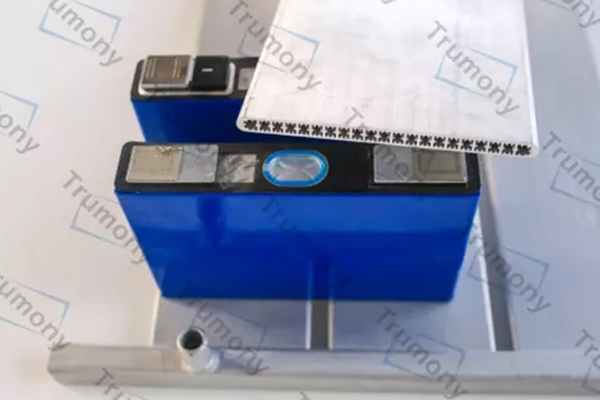Due to differences in battery characteristics, power requirements, and usage scenarios, various types of batteries employ different cooling methods. This article analyzes the cooling applications of three common battery types: lithium-ion batteries, lead-acid batteries, and nickel-metal hydride batteries.
Lithium-ion Batteries
Lithium-ion batteries are widely used in electric vehicles (EVs), energy storage systems (ESS), and high-end portable electronics. Because of their high energy density and large charge-discharge power, they generate considerable heat during operation, necessitating more advanced cooling methods.
Electric Vehicles
Take Tesla’s Model S and Model X, for example. These vehicles use direct liquid cooling systems. The battery cells are in close contact with coolant-filled cold plates, which efficiently remove heat and ensure thermal stability during high power output and fast charging.
Energy Storage Systems
In large-scale ESS, indirect liquid cooling is typically adopted. Battery modules are mounted on cold plates, and coolant circulates through channels within the plates to maintain consistent temperatures across modules. This method supports the high charge-discharge cycles required in grid-scale storage.
Portable Devices
Some high-end smartphones, such as specific Samsung models, use Phase Change Material (PCM) cooling technology. PCM is placed near the battery and other heat-generating components. During intensive use, like gaming or multitasking, the PCM absorbs heat and undergoes a phase change, working alongside natural convection to manage moderate to high heat loads.
Lead-acid Batteries
Lead-acid batteries are commonly found in low-speed electric vehicles and backup power systems. With relatively low energy density, they produce less heat compared to lithium-ion batteries
Cooling Approach
In low-speed EVs, due to limited speed and short travel distance, heat generation is minimal. Natural convection air cooling is often sufficient. By designing ventilation holes in the battery casing, heat can be dissipated via passive airflow. This method is cost-effective and structurally simple, meeting the thermal requirements in low-power applications.
Nickel-metal Hydride Batteries
Nickel-metal hydride (NiMH) batteries were once popular in early hybrid electric vehicles (HEVs) and certain portable electronics. Their power output and heat generation fall between lead-acid and lithium-ion batteries.
Hybrid Electric Vehicles
In HEVs, forced-convection air cooling is commonly used. Air is driven over the battery pack by fans or blowers to carry away heat. This solution is relatively low-cost and suitable for the frequent charge-discharge cycles of hybrid vehicles.
Portable Devices
In low-performance demand devices, NiMH batteries may rely on natural convection cooling. The internal ventilation design of the device helps maintain an appropriate operating temperature.
Contact Us
We specialize in the custom design and manufacturing of cold plates for EVs and ESS. Get in touch to optimize the cooling performance and reliability of your battery systems!

